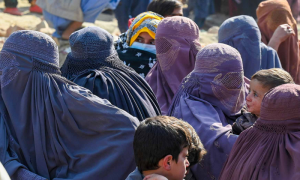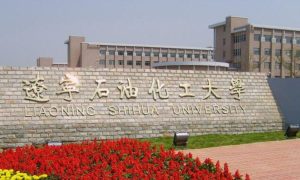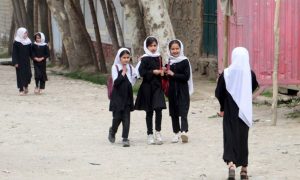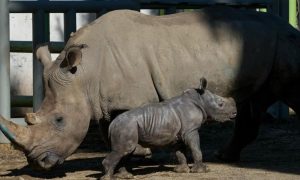In 2020 US President Joe Biden received advice from former UK Prime Minister Boris Johnson to invest in the nations rather than starve them in order to divert attention from China. He actually gave another Marshal Plan for these nations. With his Turkish ancestors (of Boris Johnson, whose great-grandfather was Turkish) had given Biden wise counsel. Biden ignored these countries, including Pakistan, Sri Lanka, Iran, and a few other Middle Eastern countries, and concentrated on tweaking and starving them.
These nations developed a mistrust for the United States as a source of nation-building and as a result of this policy of ignorance. No nation could sustain itself like the African states, where millions of people risk starvation or being eaten alive by birds and animals. These countries require money and knowledge as they emerge from poverty.
Only China is currently able to provide this, and by doing so, she is winning over the hearts of countries in Asia, the Middle East, and Africa. In these states, trade and investment with China are expanding right now. China is the major planner and financial supporter of these nations.
It is not sensible for Americans to show a lack of interest in these countries. All in all, this is widening the disparities in relations between these countries and the USA and India. India is making an effort to placate them through its presence and regional ties, although the region does not particularly like its support for Israel and the United States.
Few Chinese investment examples can be found in nearby countries where investment is urgently needed.
Chinese Economic Ties with Saudi Arabia
In Panjin City of northeast China’s Liaoning Province, the construction of a significant chemical plant, a joint investment initiative by China and Saudi Arabia, began recently.
The project’s total investment is 83.7 billion yuan (approximately 12.2 billion dollars), of which Saudi Aramco owns 30%, and the other shares are held by North Huajin Chemical Industries Group Corporation, which owns 51% of the project, and Panjin XinCheng Industrial Group, which owns 19%.
According to reports, China still bought Iranian oil in spite of American sanctions. The two nations agreed on a 25-year strategic partnership to advance their economic and security ties in 2021.
Economy: China has been Iran’s top trading partner for ten years running. Iran’s trade with China increased by 7% from 2021 to approximately $16 billion in 2022. According to reports, China’s purchases of Iranian crude oil reached a new high in December 2022. By April 2023, Iran was also on schedule to formally join the Shanghai Cooperation Organization, a security and economic alliance dominated by China and Russia.
Iran-Saudi Relations’ Turning Positive
Seven years after breaking diplomatic ties, Iran and Saudi Arabia agreed to resume them in March 2023, thanks to China, Iran’s main trading partner. Beijing’s expanding influence and interest in Iran were reflected in the accord.
A deal to reestablish diplomatic ties between Iran and Saudi Arabia was mediated by China in March 2023. By May 2023, Tehran and Riyadh agreed to reopen their embassies. They also tried to put into effect a 2001 security cooperation deal and a larger 1998 economic cooperation accord. The Islamic Republic and the Gulf Kingdom reaffirmed their adherence to the “sovereignty of states” and “non-interference in internal affairs.” The agreement resulted in a notable de-escalation of hostilities. The declaration about the restoration of ties is as follows:
As a result of the admirable initiative of Chinese President Xi Jinping to demonstrate China’s support for fostering friendly ties between the rich Kingdom of Saudi Arabia and the oil-rich Islamic Republic of Iran, 14 February 2023, twenty agreements, including ones on trade, transportation, information technology, tourism, agriculture, and crisis response, were inked between Iran and China during President Ebrahim Raisi’s three-day state visit to Beijing.
These deals might be worth billions of dollars. Iranian President Ebrahim Raisi and Chinese President Xi Jinping made a commitment to bolster their economic and security cooperation amid escalating tensions with Western countries. China would contribute to cooperative projects like an upgraded Imam Khomeini Airport and a high-speed rail system connecting Tehran and Mashhad.
Iran, China, and Russia collaborated on a naval exercise in the Gulf of Oman from March 15 to 19. The exercise, known as “Security Bond-2023,” would “deepen practical cooperation between the participating countries’ navies… and inject optimistic energy into regional peace and stability,” according to the Chinese Defense Ministry. According to reports, the exercise concentrated on non-combat tasks, including search and rescue missions.
Chinese Investment in State of Qatar
Following a trend of a minor drop in investment volume, which had reached its peak in 2017 at US$1.03 billion, China completed projects in Qatar totaling US$423.44 million in 2020.
In recent years, relations between China and Qatar have significantly improved. In commerce, energy, and other domains, as well as in the political, economic, and cultural spheres, the relationship between the two nations has witnessed continuous and fluid growth, actively highlighting the economies’ structural complementarities.
In order to comprehend the impact and scope of the Qatar-Gulf issue on Doha’s participation and integration within the Belt and Road Initiative, this paper seeks to investigate the driving forces behind Beijing’s efforts to formally establish a strategic alliance with Qatar. Seven key areas of cooperation are covered by China’s steps to formally establish strategic alliances with Qatar: policy coordination, connectivity, commerce and investment, energy cooperation, financial cooperation, military links, tourism, and cultural ties.
China has opinions on the escalating sectarian conflict in the Sunni world as the second-largest economy in the world. Gas, consumer goods, and investment-based cooperation between China and Qatar have a long and rich history. Qatar supplies gas to China because it has the second-largest natural gas reservoir in the world (exports from Qatar to China increased by more than 60% last year). With a share of over 15%, Beijing has already surpassed the US as Qatar’s primary importer. Qatar is a significant financial partner of China as well.
A clearing house for the Chinese yuan (renminbi) was established in Doha in 2015. Additionally, the level of commercial collaboration between China and the Arab Quartet, which consists of Saudi Arabia, Bahrain, the United Arab Emirates, and the State of Egypt, increased dramatically. For instance, China has increased its imports of crude oil from Saudi Arabia in recent years, and the state-run Saudi Aramco is on course to overtake other suppliers as China’s primary crude oil supplier in 2019 after concluding five deals that together represent China’s largest crude oil purchase (Mayenkar 2018).
China Arabic Eco Links
China is the very second-largest trading partner of the UAE, with about $60 billion in bilateral trade in 2017 and an anticipated increase of up to $70 billion by 2020. China Report 56, 1 (2020): 78-102. As the entry point for 60% of China’s exports to Middle Eastern countries and North Africa, the UAE is now an important business and trade hub for China, with 4,200 Chinese enterprises doing business there (Al Daheri 2019). In conclusion, it is anticipated that the strategic alliance between China and Qatar will continue to grow, supported by a complicated web of dependency based on the seven areas mentioned.
Chinese Investment and Financial Support for Afghanistan
The signing of a multimillion-dollar, 25-year oil extraction contract by a Chinese company last month marked the first big foreign investment in Taliban-run Afghanistan. Despite China’s dubious track record of closing transactions, experts are cautiously confident that the project would create jobs and generate cash.
The Amu Darya basin, which stretches between central Asian nations and Afghanistan and covers an area of about 4.5 square kilometers (1.73 square miles), is where the Taliban signed a contract on January 6 with Xinjiang Central Asia Petroleum and Gas Company (CAPEIC), a division of the state-owned China National Petroleum Company (CNPC). According to the agreement, $150 million will be invested in Afghanistan in the first year and $540 million over the next three, a Taliban spokeswoman announced on Twitter.
The earlier agreement, which was also for 25 years, called for a $400 million initial investment to extract 87 million barrels of oil, which would eventually bring in at least $7 billion for Afghanistan.
Chinese Investment in Pakistan
Chinese loans and investments in Pakistan have already reached well over $100 billion thanks to the most recent $50 billion in memoranda. In the longer run, according to a senior member of the CPEC team at Pakistan’s Ministry for Planning, Development, and Reform, that amount will reach $150 billion. That will be a conservative estimate if the cost overruns for the dams, which average 96 percent, occur.
A country in need of funding, weary of foreign aid, and governed by a political party that views infrastructure as essential to reelection will receive the funding.
China and Pakistan agreed on a $50 billion deal in May 2017 that fully funded Diamer Basha and four other dams.























